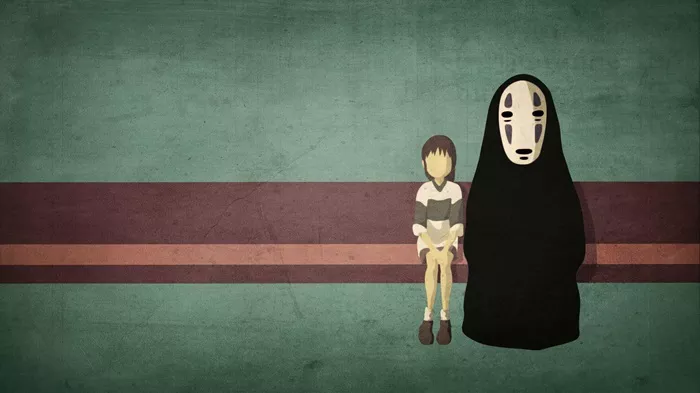Spirited Away,” directed by Hayao Miyazaki and produced by Studio Ghibli, is one of the most beloved and critically acclaimed animated films of all time. Among its many intriguing characters, No-Face stands out as one of the most enigmatic and symbolic. This article delves into the meaning and significance of No-Face, exploring the character’s role in the narrative, its symbolism, and its impact on viewers.
Introduction to No-Face
No-Face, or Kaonashi (顔無し) in Japanese, is a spirit in “Spirited Away” who appears as a dark, faceless figure wearing a white mask. The character’s appearance is both eerie and captivating, drawing viewers into its mysterious presence. Unlike other spirits in the bathhouse, No-Face’s nature and intentions are not immediately clear, making it a subject of much analysis and interpretation.
No-Face’s Appearance and Initial Encounter
No-Face first appears as a solitary figure standing on the bridge to the bathhouse, silently observing the bustling activity around it. Its black, shapeless body and white mask with minimal facial features create an unsettling contrast, emphasizing its otherworldly nature. This introduction sets the stage for No-Face’s complex role in the story.
Symbolism of No-Face’s Appearance
The minimalist design of No-Face is intentional, allowing for a wide range of interpretations. The lack of distinct facial features suggests an absence of identity or personality, making No-Face a blank slate that can be influenced by its environment and the characters it encounters. This design choice also reflects the themes of emptiness and desire that are central to No-Face’s character arc.
No-Face’s Role in the Narrative
No-Face’s journey in “Spirited Away” is marked by a series of transformations that reflect its interactions with the world around it. These transformations are both physical and symbolic, highlighting the character’s evolving nature and the influence of its surroundings.
No-Face and Chihiro: The Initial Connection
No-Face’s first significant interaction is with the protagonist, Chihiro (also known as Sen). Chihiro’s kindness and acceptance of No-Face establish a bond that drives much of the character’s development. This relationship is crucial for understanding No-Face’s motivations and actions throughout the film.
No-Face’s Transformation in the Bathhouse
Inside the bathhouse, No-Face begins to absorb the traits and desires of those around it, leading to a dramatic transformation. Consuming the bathhouse workers and adopting their greed and gluttony, No-Face grows larger and more monstrous. This transformation serves as a critique of materialism and the corrupting influence of excess.
See Also: What Spirit Is No Face?
The Turning Point: Chihiro’s Intervention
Chihiro’s intervention is pivotal in No-Face’s journey. By offering No-Face a medicinal dumpling given to her by the River Spirit, Chihiro helps No-Face purge the consumed corruption. This act of compassion and cleansing marks the beginning of No-Face’s return to its original, more benign form. The scene underscores the themes of purity and redemption.
Symbolic Interpretations of No-Face
No-Face is a character rich with symbolic meaning, and its actions and transformations can be interpreted in various ways. These interpretations shed light on the broader themes of “Spirited Away” and offer insights into Miyazaki’s storytelling.
No-Face as a Symbol of Desire and Emptiness
One prevalent interpretation of No-Face is that it represents unchecked desire and the emptiness that often accompanies it. Initially, No-Face is a passive observer, but once it begins to consume and mimic the greed of the bathhouse workers, it becomes a monstrous embodiment of insatiable hunger. This portrayal reflects the dangers of consumerism and the loss of self that can result from overindulgence.
No-Face and the Consequences of Influence
No-Face’s ability to absorb the characteristics of those around it highlights the impact of environmental and social influences on an individual’s identity. This theme is particularly relevant in the context of Chihiro’s journey, as she navigates a world filled with various spirits and influences. No-Face’s transformations serve as a cautionary tale about losing oneself to external pressures.
The Mask as a Metaphor for Identity
The white mask that No-Face wears can be seen as a metaphor for the struggle with identity. The mask hides No-Face’s true nature, much like how individuals often hide their true selves behind societal masks. This symbolism is reinforced by No-Face’s eventual shedding of its monstrous form and return to a more innocent state, suggesting a reconciliation with its true identity.
No-Face’s Impact on the Audience
No-Face’s character resonates deeply with audiences, evoking a range of emotions from fear to empathy. This emotional connection is a testament to Miyazaki’s skill in creating multifaceted characters that reflect universal human experiences.
Fear and Fascination
No-Face’s initial appearance and subsequent transformation into a voracious monster evoke fear and fascination. The character’s unpredictable nature and ability to consume others make it a formidable presence in the film. This duality of fear and fascination mirrors the complexity of human desires and the potential for both creation and destruction within us.
Empathy and Redemption
Despite its frightening transformation, No-Face ultimately evokes empathy, particularly through its interactions with Chihiro. The character’s journey from corruption to redemption is a powerful narrative arc that resonates with themes of forgiveness and second chances. This transformation encourages viewers to look beyond appearances and understand the underlying motivations and struggles of others.
Conclusion:
No-Face remains one of the most iconic and enigmatic characters in “Spirited Away,” symbolizing themes of desire, identity, and redemption. Through its journey, No-Face reflects the complexities of human nature and the impact of external influences on our sense of self. Ultimately, No-Face’s meaning is open to interpretation, allowing each viewer to find their own significance in the character’s journey. Whether seen as a critique of consumerism, a symbol of identity struggles, or a tale of redemption, No-Face offers a rich tapestry of themes and emotions that continue to captivate and inspire.No-Face is a multifaceted character whose journey in “Spirited Away” offers profound insights into human nature and the quest for identity. Through detailed exploration of its symbolism and role in the narrative, we gain a deeper appreciation for this enigmatic spirit and the timeless themes it represents.

